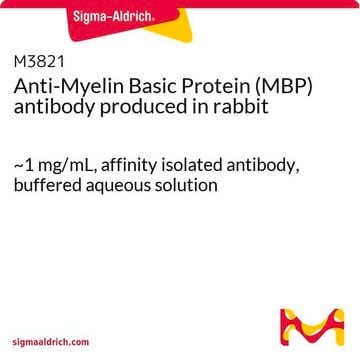M6295
Monoclonal Anti-Maltose Binding Protein antibody produced in mouse
clone MBP-17, ascites fluid
Synonym(s):
Monoclonal Anti-Maltose Binding Protein, Maltose Binding Protein Antibody, Maltose Binding Protein Antibody - Monoclonal Anti-Maltose Binding Protein antibody produced in mouse, Anti-MBP
About This Item
Recommended Products
biological source
mouse
conjugate
unconjugated
antibody form
ascites fluid
antibody product type
primary antibodies
clone
MBP-17, monoclonal
contains
15 mM sodium azide
technique(s)
dot blot: suitable
indirect ELISA: suitable
western blot: 1:4,000 using purified, recombinant MBP
isotype
IgG1
shipped in
dry ice
storage temp.
−20°C
target post-translational modification
unmodified
Looking for similar products? Visit Product Comparison Guide
Related Categories
General description
Immunogen
Application
- western blotting and in vitro pull-down assay in Arabidopsis thaliana and Oryza sativa proteins
- dot blot assay of MBP recombinant G protein of Oryza sativa
- C3b complement component binding assay
Biochem/physiol Actions
Disclaimer
Not finding the right product?
Try our Product Selector Tool.
related product
Storage Class Code
13 - Non Combustible Solids
WGK
WGK 1
Flash Point(F)
Not applicable
Flash Point(C)
Not applicable
Certificates of Analysis (COA)
Search for Certificates of Analysis (COA) by entering the products Lot/Batch Number. Lot and Batch Numbers can be found on a product’s label following the words ‘Lot’ or ‘Batch’.
Already Own This Product?
Find documentation for the products that you have recently purchased in the Document Library.
Our team of scientists has experience in all areas of research including Life Science, Material Science, Chemical Synthesis, Chromatography, Analytical and many others.
Contact Technical Service








